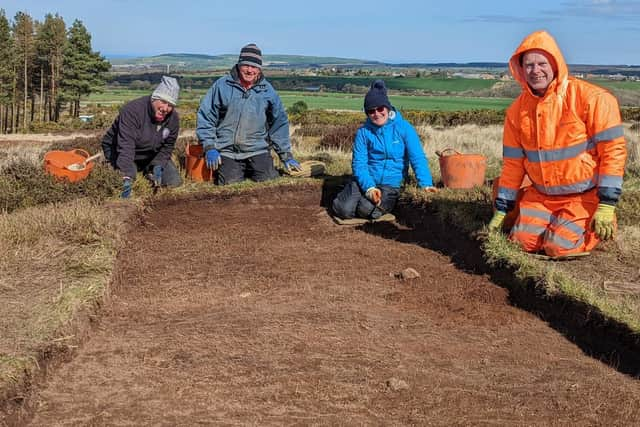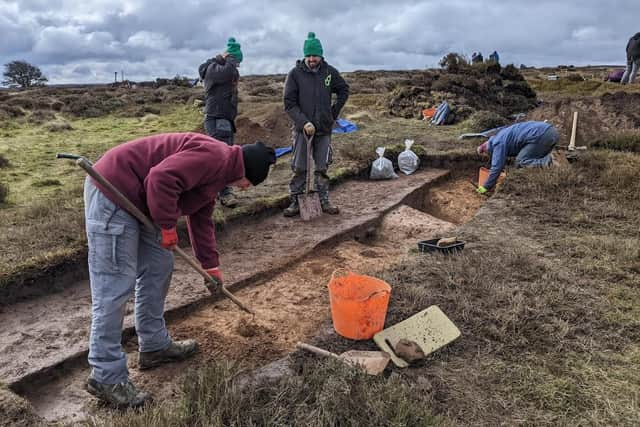Bronze Age and Roman discoveries at archaeological dig at prehistoric farming village in the North York Moors
Excavations at the site in the north of the National Park, near Guisborough, began following an aerial survey in 2016 which identified the area as having been the location of an ancient village.
The farmstead is thought to have been occupied around 2-4,000 years ago and those living there raised livestock as well as cultivating crops.
Advertisement
Hide AdAdvertisement
Hide AdInitial finds have included a range of flints from the Neolithic and Bronze Age and a small amount of pottery.


The work has been carried out by DigVentures, a social enterprise which invited members of the public to take part.
North York Moors National Park Authority head of historic environment Miles Johnson said: “It’s always exciting to have the opportunity to discover something new and help reveal the hidden history of the landscape. It’s been a number of years since we’ve seen an excavation on this kind of site in the North York Moors and few examples of this kind of site have ever been investigated in the region.”
"The site first came to the attention of our archaeology team following an aerial survey of the surrounding landscape, known as LiDAR mapping, in 2016. LiDAR uses laser technology to scan the ground and can identify subtle variations, such as ridges and troughs, which may otherwise be hidden under vegetation. This airborne survey was later followed by a study on the ground (undertaken in 2019), which looked for further clues about the site’s history.


Advertisement
Hide AdAdvertisement
Hide Ad“The information we have so far suggests a farming settlement, surrounded by small fields which were cultivated and probably held livestock too.
“The remains look to be significant, but the investigation will be targeted and small-scale so that the impact on both the archaeology and the surrounding environment is as minimal as possible. We are taking precautions so as not to disturb nesting birds, adders and other wildlife.”
“Ultimately we hope that this excavation might give us a better insight into domestic life around 2-4,000 years ago in the North York Moors. Many of the features that survive or have been excavated from this period are monumental in nature, for example barrows or dykes. But understanding the everyday, ordinary lives of people is important too.”
The current dig will finish by mid-April, but the work to study, identify and properly catalogue the finds and environmental information from the site will continue over the coming months. The knowledge generated will also be added to the North York Moors Historic Environment Record, an index of known physical cultural heritage across the National Park.
Advertisement
Hide AdAdvertisement
Hide AdStephanie Duensing from DigVentures added: "Over 30 local residents from all walks of life joined our dig team, eager to learn about archaeology and to help us unearth the story of this fascinating new site.
“Together we've had an incredible 10 days of discovery, digging through sun and snow to reveal the first solid evidence of when this settlement was occupied and who by, including an early Bronze Age tanged arrowhead, a gorgeous little thumbnail scraper, and a collection of Roman pottery sherds.
“It's been a fantastic experience and we're really looking forward to what other discoveries we make as we start to analyse these artefacts and soil samples in the lab.”
